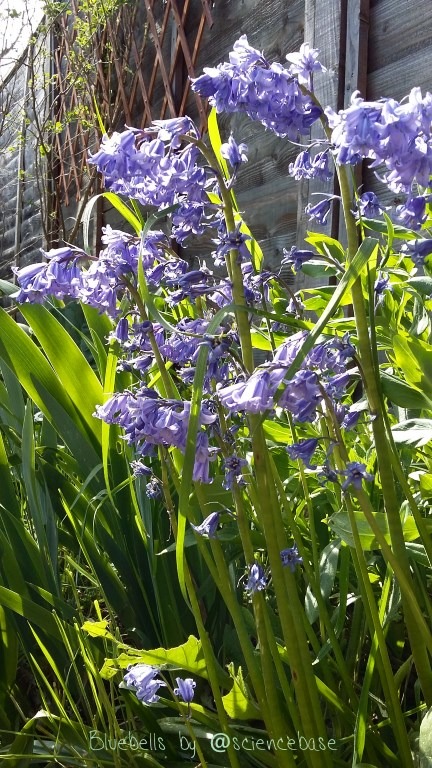Hyacinthoides non-scripta, the common bluebell is native to the British Isles and is now in competition with the Spanish variety. You can smell the difference as the native bluebell has a scent, the Spanish doesn’t, hybrids have some scent but it is not as strong as the native species.

Visually, the petals of the bell in the native species are curled back at the tips and all hang from one side of the stem giving rise to a characteristic droop. This is not seen in the Spanish strain which are more erect as the bells emerge from around the circumference of the stem, the hybrids only droop a little. Pictured are native bluebells growing in our garden. Usually, this flower will carpet a woodland in Spring just ahead of the temperatures rising, the days getting longer and leaves emerging to form the perennial deciduous canopy of trees.
We have a few pink bluebells too and some white ones, not to be confused with the three-cornered leek, Allium triquetrum, apparently.